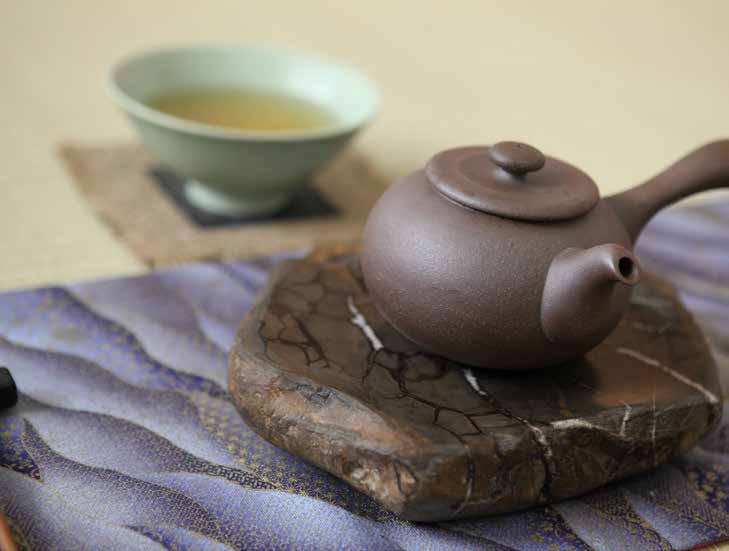
 |
|
We are very proud of all the teas we have chosen for these sessions each month, covering a broad spectrum of some of our favorite teas at the center - teas we ourselves drink regularly, and with great relish. In fact, this has been the most joyous part of this Global Tea Hut, and as we mentioned in the introduction to this issue, the reason we have decided to cap this assembly here in the Hut: We don't want to have to choose teas based on the amount our supporters (farmers/vendors) can afford to give, but rather choose the teas we find most inspiring from among those we regularly drink and offer them to you. We hope to continue this trend, sharing some of the rarer and more precious teas we drink as well as the ones we love because they are a part of our everyday tea drinking. And this month, we'll all get the chance to celebrate one such rare tea.
This month we have the fortunate chance to share a very special red tea together. As we discussed last month, red tea is picked and piled for twelve to twenty-four hours to oxidize the leaves. They are then rolled for a long time, breaking down the cells and further oxidizing the tea. Finally, it is dried, though sometimes it is piled again before drying, making it the most oxidized of all teas.

Last issue, we also discussed how complicated it is to say that all tea is one species, Camellia sinensis, and that the differences in teas are all in the processing. This is because the various kinds of processing evolved in response to varietals of tea. Remember that we said a tea processed from bushes elsewhere will never be as good as say an Oolong tea made from genuine Wuyi old-growth bushes. A tea usually has a way that it "wants" to be processed, and the masters are those that can "hear" its music. Is it not thus with all art and mastery? Michelangelo said that his gorgeous sculptures were already within the stone, and he but removed the superfluous material from around them. Likewise, brewing tea properly is all about asking how the tea wants to be brewed, rather than how we want to brew it. It is a listening and understanding of the medium, as with all great art.
This month's tea is another perfect example of listening to the leaves, even against so-called tradition. Last month, in our article on the kinds of teas, we also mentioned that despite all the modern experimentation with processing leaves from one region like those from another, it is rare for anything good to result from such trials. This tea is the exception to that rule.
Our tea from this month comes from the Mangshi Township, De Hong prefecture of Yunnan, a province in Southwest China, and as we have discussed, the birthplace of all tea. It's of the "野生" varietal (Camellia sinensis (L.) Kuntze var. assamica (J. Masters) Kitam.) This is a primeval varietal that pre-dates Camellia Sinensis var. Assamica and is a naturally occurring nonhybridized varietal. Its potency and incredible Cha Qi arise from its unadulterated nature. It is naturally bugrepellent, and grows wild in the forests of Yunnan at an altitude of 1600-2200 meters. The trees are old-growth, ranging in the hundreds of years old. They are all completely wild and natural.
This varietal of tea also has a very unique mutation: Its buds are purple. The purple buds slowly turn green as they open into mature leaves, changing from inside to out. This lends the tree a beautiful glow, as the buds are all purple and many of the smaller leaves around them are ringed with purple. This unique coloration is found elsewhere in the tea world as well, notably the varietal of Wuyi Cliff Tea called "Iron Arhant (Tie Lou Han)".
Normally, teas such as this one are processed like Puerh tea. This purple-bud varietal of Puerh is found throughout Yunnan and was even mentioned in Lu Yu's Classics of Tea, the oldest book on tea. It took a gifted tongue to realize that the tea from this garden would rather be Red Tea. And we have drunk its Puerh version, so we know from firsthand experience. You won't need to trust us, however, for as soon as you open your sample bag and smell this remarkable tea, you'll wonder how it ever could be processed any other way.
This unique purple bud, old-growth, wild Red Tea is out-of-this-world flavorful. It erupts in a bouquet of fruity, flowery notes that expand seemingly endlessly. You haven't ever had anything quite like it. The Qi is fanciful and uplifting, which is rare for a Red Tea. But this tea breaks all the molds.
You can brew it most any way, and you'll find it responds well. We drink it in bowls, steep it in a sidehandle pot and sometimes even brew it Gongfu style. It is very patient, especially for Red Teas, which usually don't last so many steepings. Therefore, be sure to give yourself a whole morning to enjoy it. Like most great teas, the glorious fragrance of this tea is so much better shared with a friend or loved one.

We don't usually ask anything of you in the way you brew your tea each month, but due to the rarity of this special tea we thought it would be okay if we made a request of you: Please share this tea, rather than drinking it alone. Rare teas should only be steeped in the spirit of sharing, which is the true spirit of tea. You'll find the fruit in this tea all that much fruitier, and the flowers will blossom to the horizon if you pour it in the spirit of giving. In that way, we'll make this Hut that much bigger this month, and our influence will be more pronounced as well...